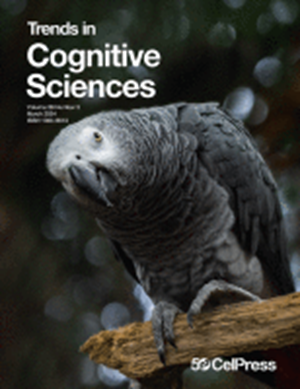语言创作中从整体到部分的发展。
IF 16.7
1区 心理学
Q1 BEHAVIORAL SCIENCES
Trends in Cognitive Sciences
Pub Date : 2025-01-01
Epub Date: 2024-10-28
DOI:10.1016/j.tics.2024.09.015
引用次数: 0
摘要
儿童通过学习部分和构建整体来学习语言。但他们也可以先学习整体,然后再发现部分。我们在儿童在没有输入的情况下创造语言的过程中展示了这一未被充分研究但却影响深远的过程。因此,"从整体到部分 "的学习不需要由难以分割的输入驱动,这是儿童学习语言的一种偏向。本文章由计算机程序翻译,如有差异,请以英文原文为准。
Whole-to-part development in language creation.
Children approach language by learning parts and constructing wholes. But they can also first learn wholes and then discover parts. We demonstrate this understudied yet impactful process in children creating language without input. Whole-to-part learning thus need not be driven by hard-to-segment input and is a bias that children bring to language.
求助全文
通过发布文献求助,成功后即可免费获取论文全文。
去求助
来源期刊

Trends in Cognitive Sciences
医学-行为科学
CiteScore
27.90
自引率
1.50%
发文量
156
审稿时长
6-12 weeks
期刊介绍:
Essential reading for those working directly in the cognitive sciences or in related specialist areas, Trends in Cognitive Sciences provides an instant overview of current thinking for scientists, students and teachers who want to keep up with the latest developments in the cognitive sciences. The journal brings together research in psychology, artificial intelligence, linguistics, philosophy, computer science and neuroscience. Trends in Cognitive Sciences provides a platform for the interaction of these disciplines and the evolution of cognitive science as an independent field of study.
 求助内容:
求助内容: 应助结果提醒方式:
应助结果提醒方式:


